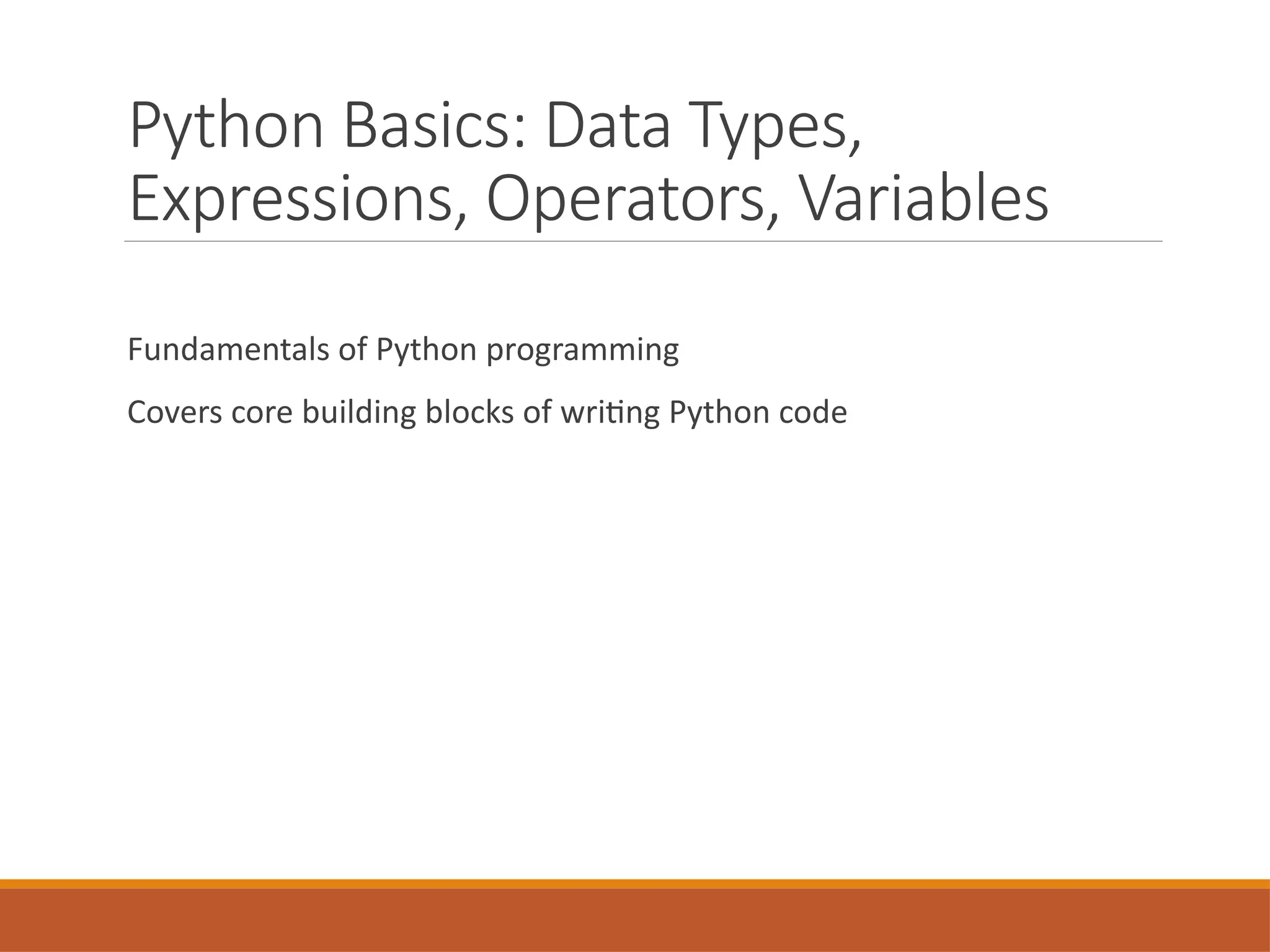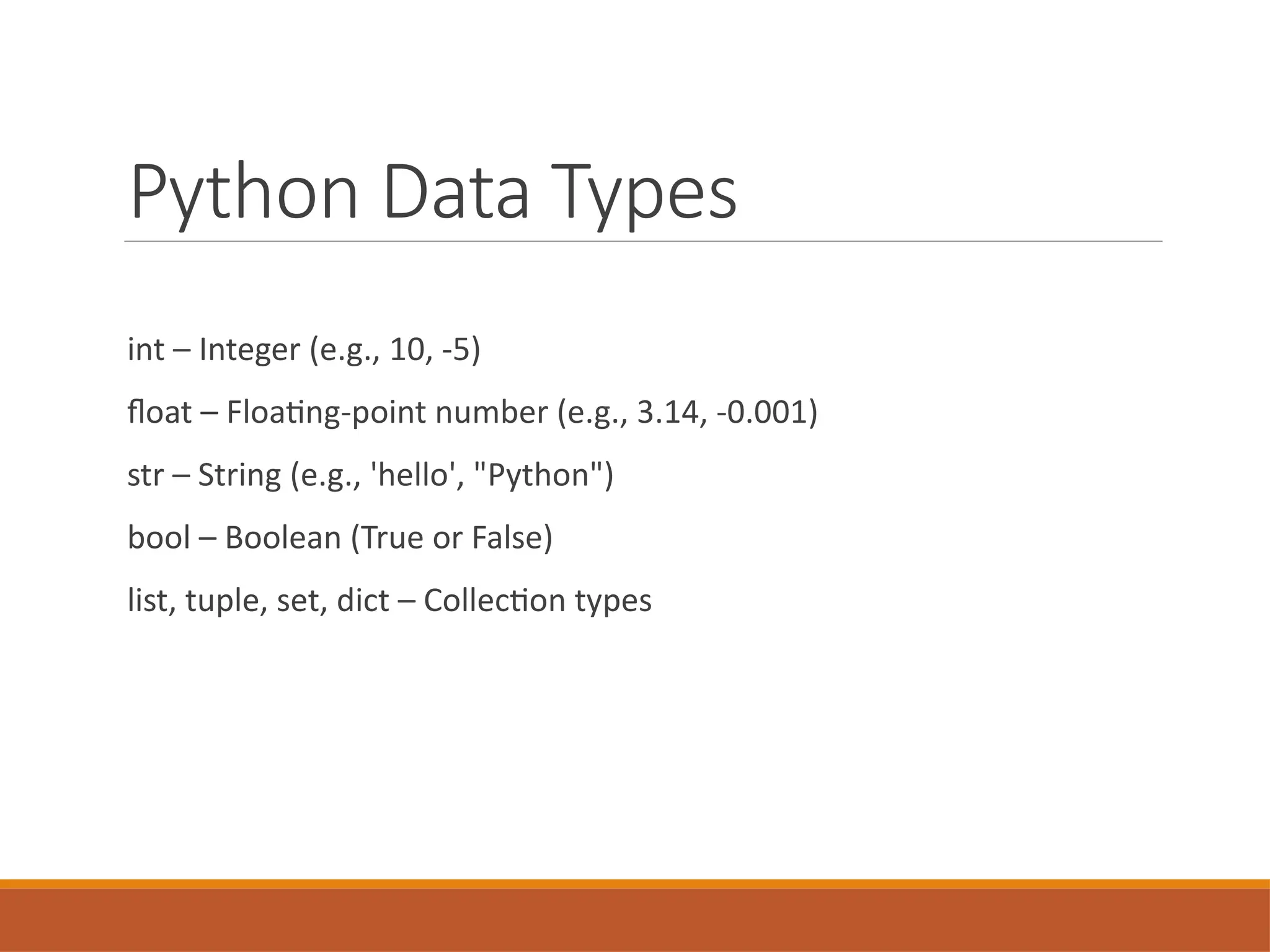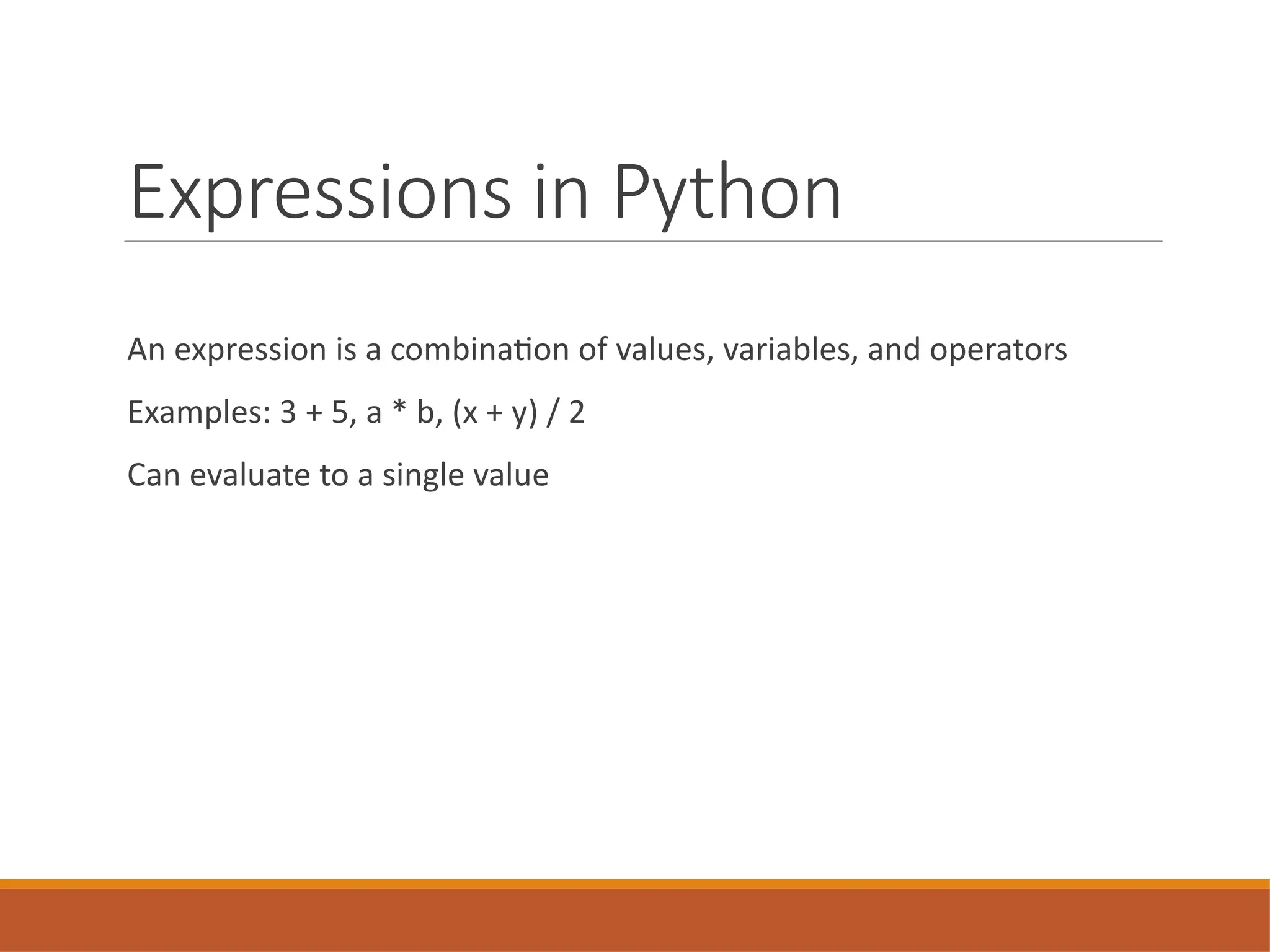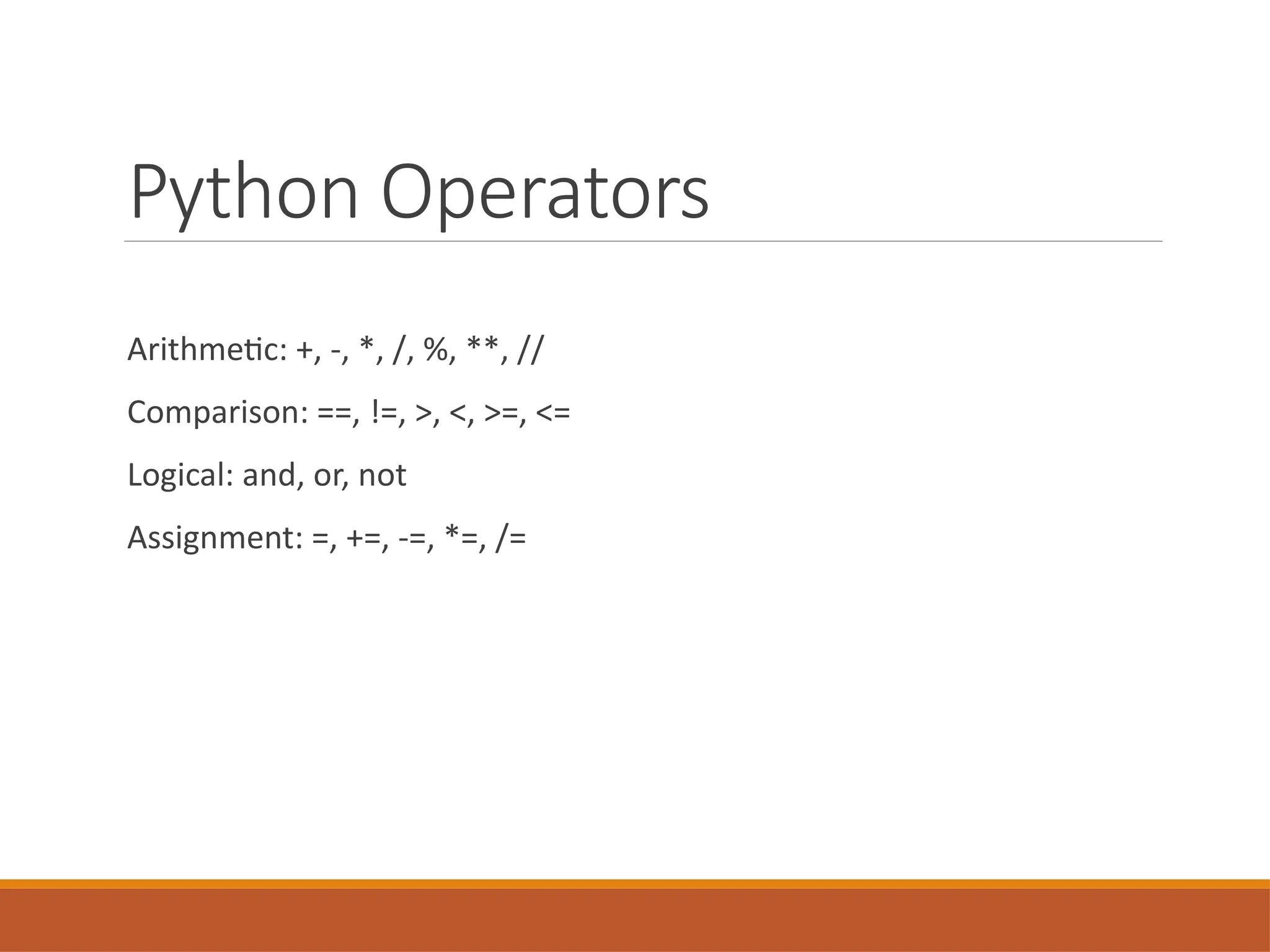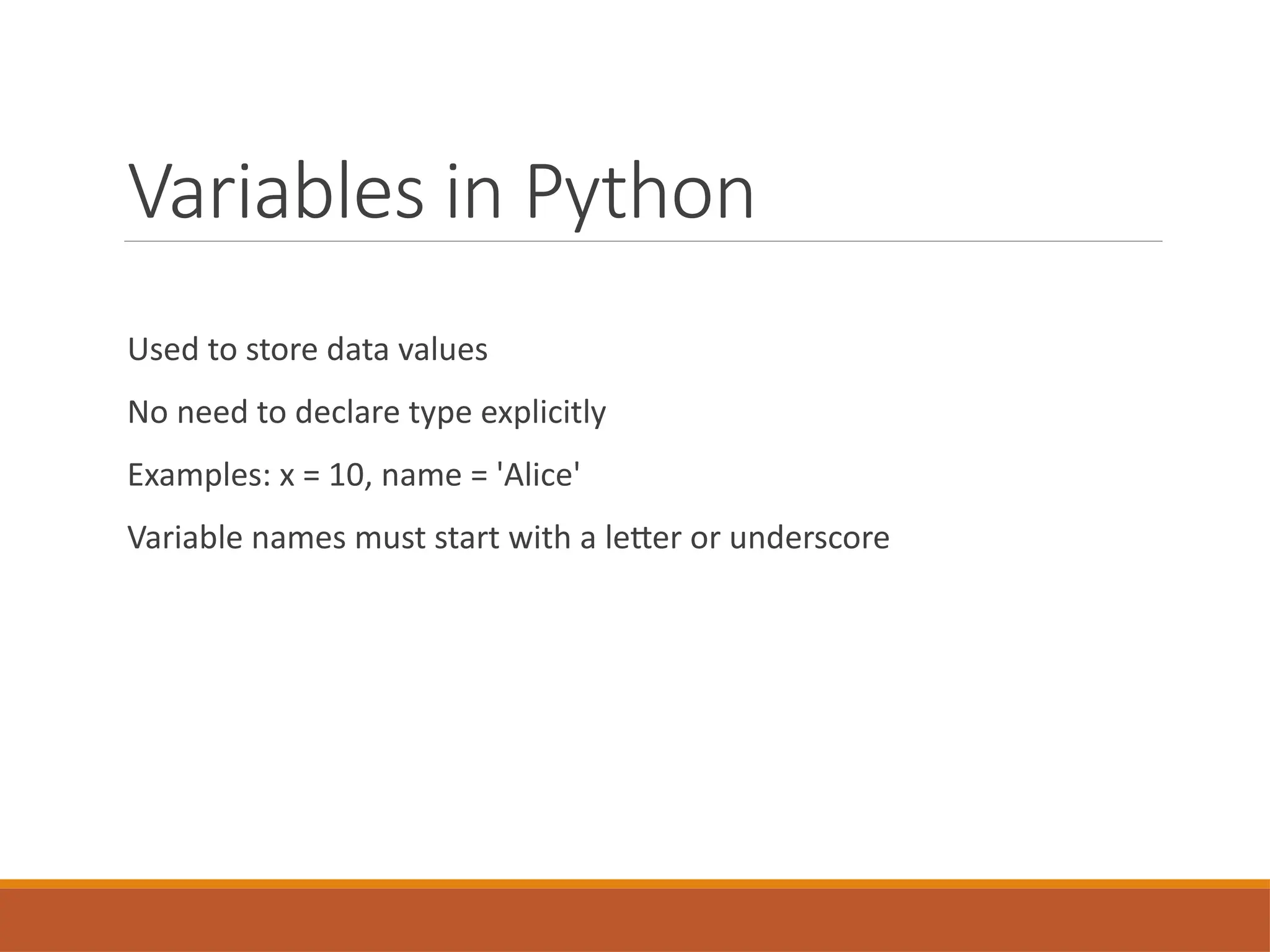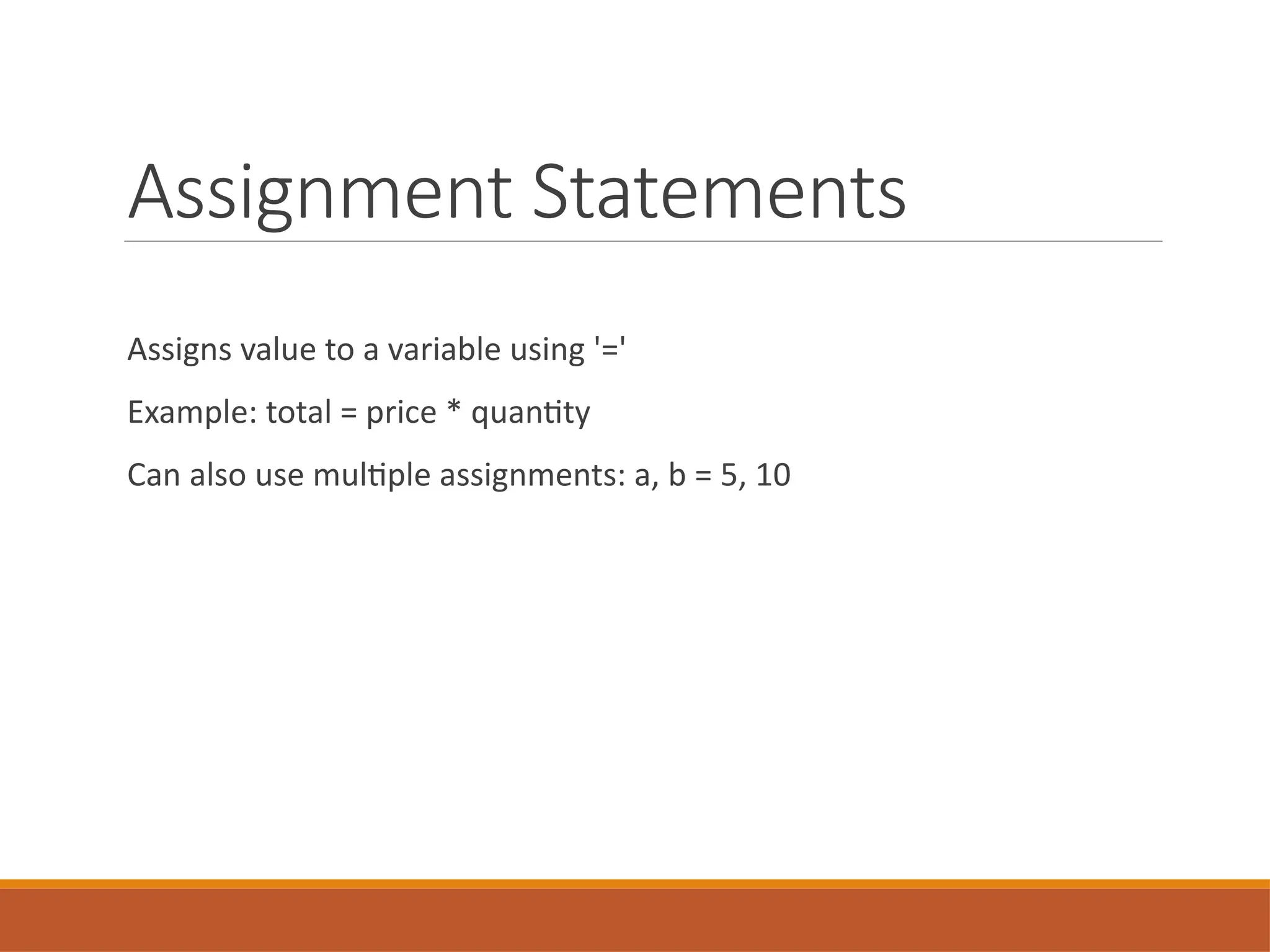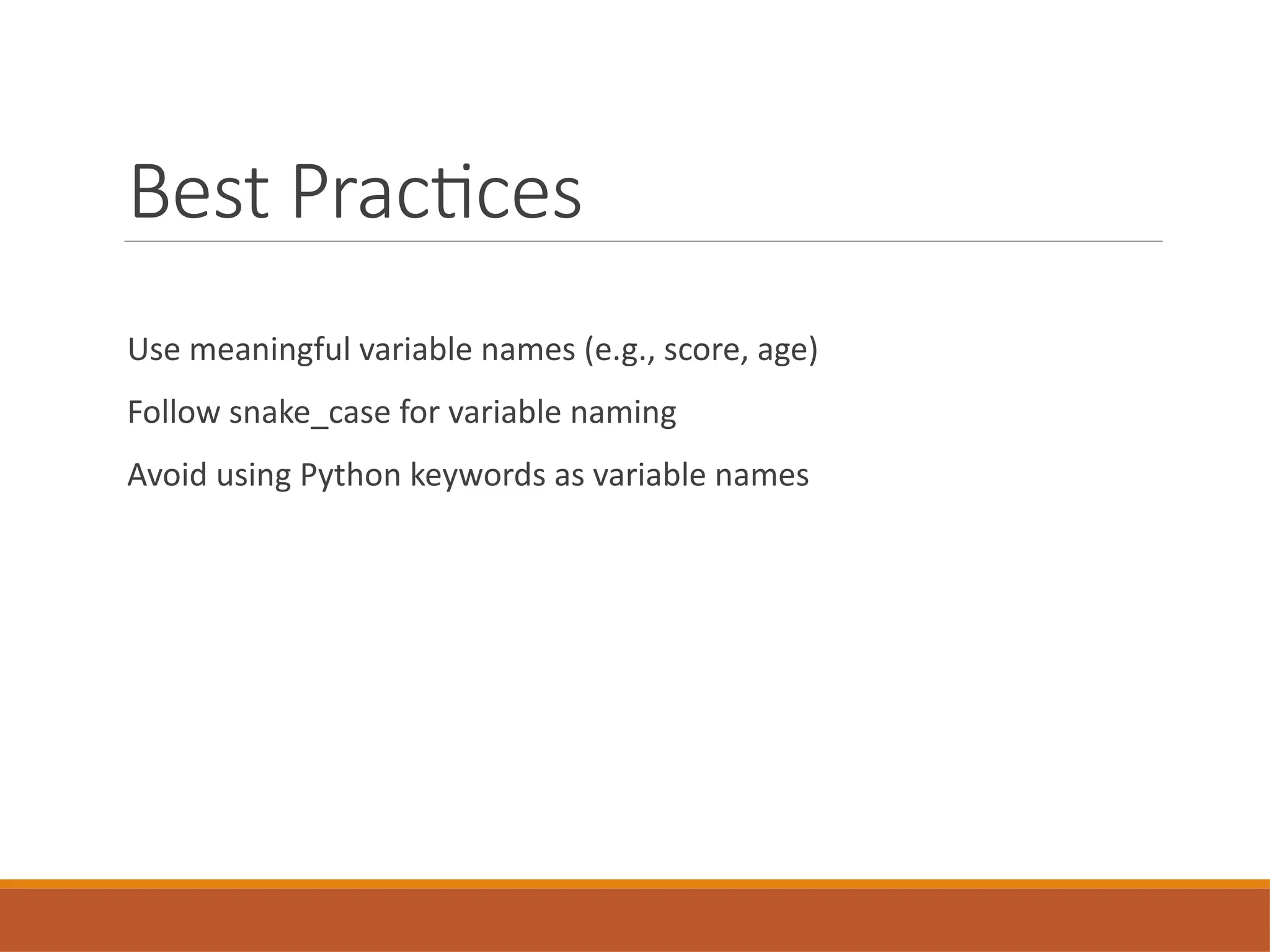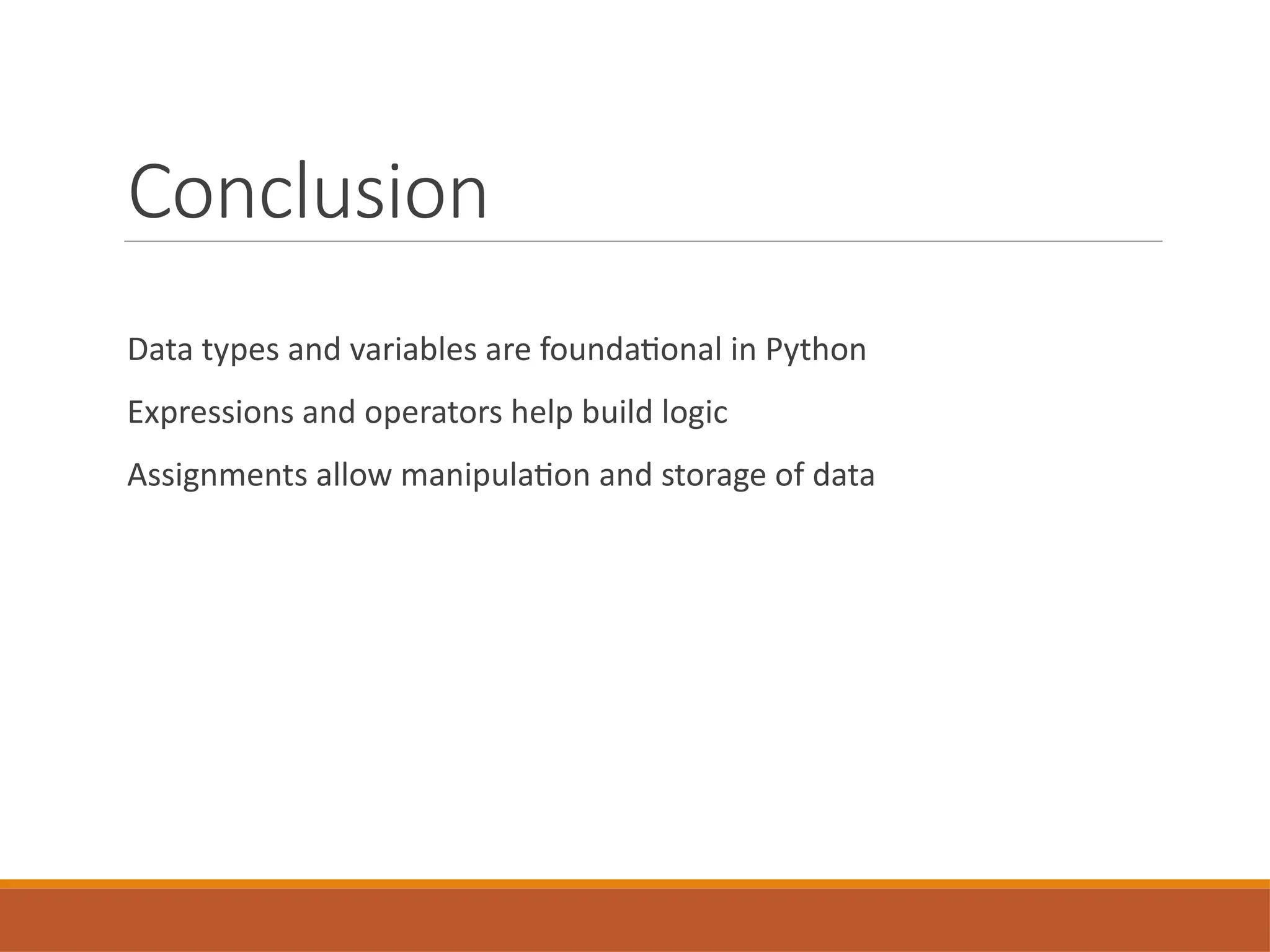Python_DataTypes_Expressions_Operators.pptx
Recommended
PPTX
PPTX
Data_Types_and_Math_Expressions_Python.pptx
PPTX
PPTX
PPTX
PPTX
PPTX
chapter-3-engdata-handling1_1585929972520 by EasePDF.pptx
PPTX
PPT
PythonCourse_02_Expressions.ppt Python introduction turorial for beginner.
PPTX
pythonbasics_includes _info about variables data types, numbers
PPTX
parts_of_python_programming_language.pptx
PPTX
IMP PPT- Python programming fundamentals.pptx
PPTX
PPTX
PPTX
PDF
Python Basics Understanding Variables.pdf
PDF
Python Basics Understanding Variables.pdf
PPTX
Introduction to python programming ( part-1)
PPTX
Python-for-beginners.pptx,.........,....
PDF
Python basic programing language for automation
PPTX
Python programming unit-2 identifiers and keywords.pptx
PPTX
Basics of Python Programming
PPTX
Review old Pygame made using python programming.pptx
PDF
Data Handling_XI- All details for cbse board grade 11
PPTX
PDF
Basics of Python and Numpy_583aab2b47e30ad9647bc4aaf13b884d.pdf
PPTX
python notes for MASTER OF COMPUTER APPLIICATION_ppt.pptx
PDF
Data Handling_XI_Finall for grade 11 cbse board
PDF
Total Quality Management : A presentation by a third year student.
PDF
Unofficial Draft by Simanchala Sarab: #GNDU #B.A. B.Ed. (#ITEP) #Pre-Interns...
More Related Content
PPTX
PPTX
Data_Types_and_Math_Expressions_Python.pptx
PPTX
PPTX
PPTX
PPTX
PPTX
chapter-3-engdata-handling1_1585929972520 by EasePDF.pptx
PPTX
Similar to Python_DataTypes_Expressions_Operators.pptx
PPT
PythonCourse_02_Expressions.ppt Python introduction turorial for beginner.
PPTX
pythonbasics_includes _info about variables data types, numbers
PPTX
parts_of_python_programming_language.pptx
PPTX
IMP PPT- Python programming fundamentals.pptx
PPTX
PPTX
PPTX
PDF
Python Basics Understanding Variables.pdf
PDF
Python Basics Understanding Variables.pdf
PPTX
Introduction to python programming ( part-1)
PPTX
Python-for-beginners.pptx,.........,....
PDF
Python basic programing language for automation
PPTX
Python programming unit-2 identifiers and keywords.pptx
PPTX
Basics of Python Programming
PPTX
Review old Pygame made using python programming.pptx
PDF
Data Handling_XI- All details for cbse board grade 11
PPTX
PDF
Basics of Python and Numpy_583aab2b47e30ad9647bc4aaf13b884d.pdf
PPTX
python notes for MASTER OF COMPUTER APPLIICATION_ppt.pptx
PDF
Data Handling_XI_Finall for grade 11 cbse board
Recently uploaded
PDF
Total Quality Management : A presentation by a third year student.
PDF
Unofficial Draft by Simanchala Sarab: #GNDU #B.A. B.Ed. (#ITEP) #Pre-Interns...
PPTX
Single entry System Vs Double entry System.pptx
PDF
Slit lamp parts 2/ppt/notes/download.pdf
PPTX
ILA 2025 Prague CLS Presentation of Leadership journal
DOCX
Extension Education: From theory to practice by Dr Subin K Mohan.docx
PDF
Ascertaining the Level of Work Difficulty for Work Planning (for grant propos...
PPTX
Common problems or challenges faced by Indian adolescents
PPTX
Capitol Webinar October 2025 Dr. Jha.pptx
PPTX
Safety Needs and Prevention of environmental hazards.pptx
PPTX
Agriculture Lesson Note for Grade 11 Chapter 3 & 4.pptx
PPTX
How can education build trust in a polarised world_Jonathan James_OECD .pptx
DOCX
PRESS STATEMENT - Response to Minority_ Press Ready.docx
PDF
Heading Off 'Fakes' in the Academic Publishing Space
PPTX
Quiz-O-Force Diwali Quiz Preliminary.pptx
PPTX
How to Configure Custom Addons Path in Odoo 18
PDF
The Children’s Support Fund, set up to support the welfare and education of c...
PPTX
YSPH VMOC Special Report - Measles - The Americas -10-19-2025.pptx
PPTX
PECTORAL REGION.pptx Human anatomy,Bmls,
PPTX
Composition and characteristics of blood
Python_DataTypes_Expressions_Operators.pptx 1. Python Basics: Data Types,
Expressions, Operators, Variables
Fundamentals of Python programming
Covers core building blocks of writing Python code
2. Python Data Types
int – Integer (e.g., 10, -5)
float – Floating-point number (e.g., 3.14, -0.001)
str – String (e.g., 'hello', "Python")
bool – Boolean (True or False)
list, tuple, set, dict – Collection types
3. Expressions in Python
An expression is a combination of values, variables, and operators
Examples: 3 + 5, a * b, (x + y) / 2
Can evaluate to a single value
4. Python Operators
Arithmetic: +, -, *, /, %, **, //
Comparison: ==, !=, >, <, >=, <=
Logical: and, or, not
Assignment: =, +=, -=, *=, /=
5. Variables in Python
Used to store data values
No need to declare type explicitly
Examples: x = 10, name = 'Alice'
Variable names must start with a letter or underscore
6. 7. Best Practices
Use meaningful variable names (e.g., score, age)
Follow snake_case for variable naming
Avoid using Python keywords as variable names
8. Conclusion
Data types and variables are foundational in Python
Expressions and operators help build logic
Assignments allow manipulation and storage of data
